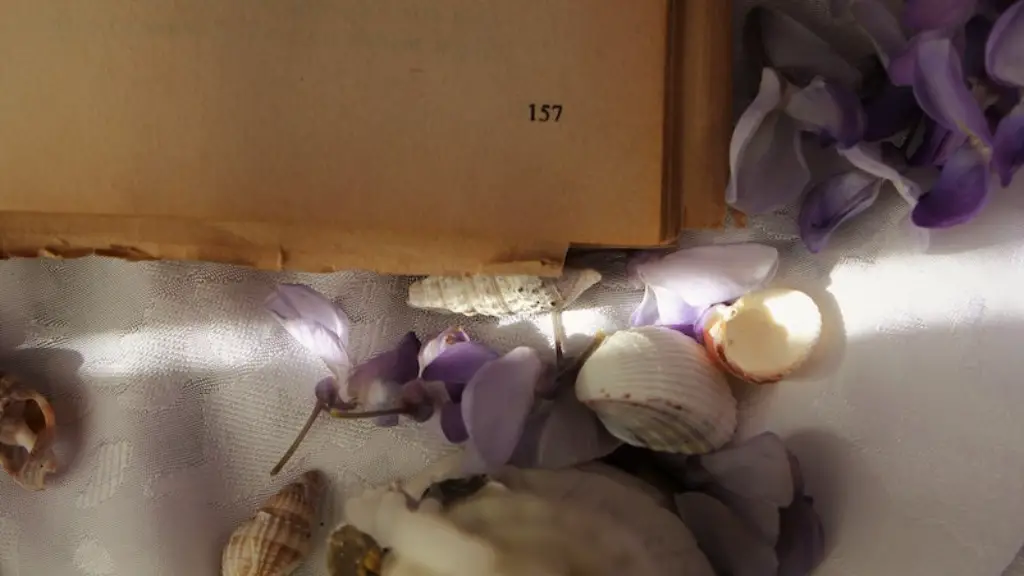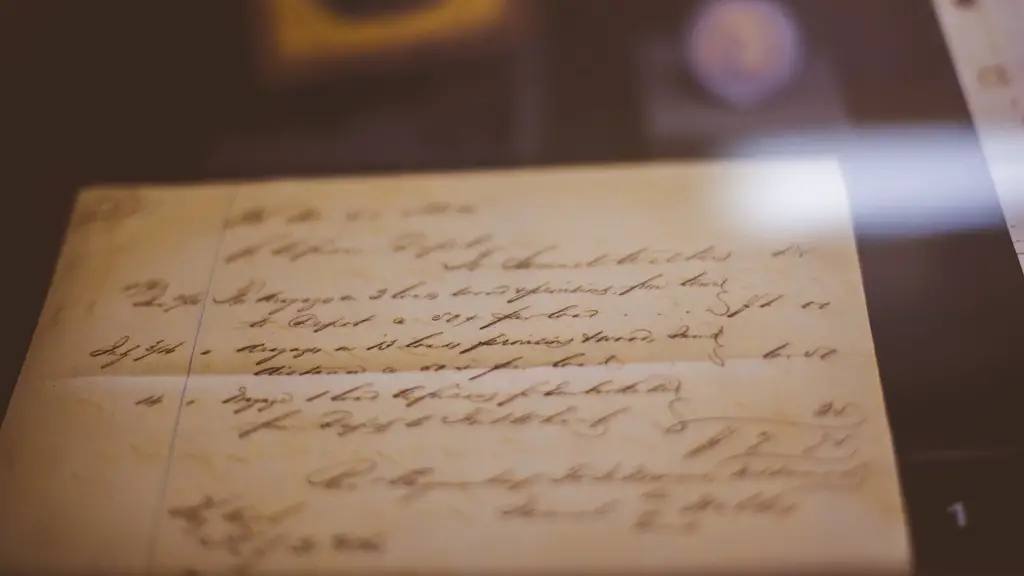Understand Poetic Language
Poetry is a unique form of literature, as it conveys a writer’s thoughts and feelings in an uncommon, specially designed language. In comparison to a novel or a newspaper article, which is typically composed of sentences of plain prose, poetry is composed of carefully selected language to create an in-depth understanding and an emotional response. To describe beautiful poetry, one must understand the language used and keep in mind the different connotations it carries.
Writers of poetry may use hyperbole, metaphors or personification in order to emphasize their message and express emotion in a more meaningful way. Hyperbole is a literary device used for exaggeration – for example, a poet might write, “My heart aches more than a thousand suns.” Metaphors are used to compare two different ideas, often to give something more context and ground – for example, the phrase “your touch is the night’s cool breeze”. Similarly, personification is used to give something human qualities, such as “the sun crept out from behind the clouds”. Through these techniques, expressive poets are able to appeal to the senses and awaken the emotions of the reader.
Often, modern day poets choose to use symbolism as a method to create an atmosphere that evokes a certain meaning. For example, in their poem ‘Let Heaven Be’, poet Danez Smith uses the phrase “all ghosts / will be free” to express racial injustice and the unjust freedom of white people. Such symbolic language allows a poem to take on multiple interpretations, providing the reader with a multi-dimensional understanding of the text.
Observe Structure and Form
Structure and form are two key aspects of poetry that contribute to the overall effect and emotion of the poem. There are many forms of poetry, from the traditional poetry structure consisting of stanzas, rhyme scheme and meter, to more contemporary styles including the use of free form poetry and repetition.
When it comes to traditional structures, the most recognized form is sonnet, which consists of fourteen lines and has a codified rhyme scheme and meter. Whilst sonnets are typically interpreted as romantic and nostalgic, this is not necessarily the case – many sonnets have been written to give a voice to important topics such as death, racial discrimination, and economic inequality.
On the other hand, more contemporary forms of poetry such as free form poetry and repetition often encapsulate a certain emotion or feeling in the language. Free form poetry rejects any specific structure and instead allows individual expression. Repetition may also be used to add power to a poem – for example, in ‘Raise the Ribbon’ by Jayne Simpson, the poet writes “Unfurled, unfurled, unfurled”, to emphasize the importance of freedom and unity.
Understand Tone and Rhythm
The tone of a poem, as well as the rhythm, greatly contribute to the beautiful quality of a poem. Tone can be interpreted in two ways – the literal tone of the poem, as well as the underlying tone that the poem is conveying. For example, the literal tone of a poem may be romantic and dreamy, whereas the underlying tone might be hinting towards a darker reality.
Rhythm is a major factor in the structure of a poem. This often affects the pacing and the overall feel of a poem. For example, in ‘Notes from the Woods’ by Alice Monroe, the poem is broken into four-line stanzas which adds a lyrical quality and increases the speed of the poem as the stanzas become shorter. Similarly, the repetition of certain words and phrases add a musical quality, further emphasizing the underlying message.
Analyze Metaphors and Symbols
Metaphors and Symbols are one of the most important aspects of poetry, as they provide the reader with a deeper understanding and appreciation of the text. Metaphors are used to compare two different ideas, often to give something more context and ground – for example, the phrase “your touch is the night’s cool breeze”. Similarly, symbols are used to create an atmosphere that evokes a certain meaning. For example, in the poem “Let Heaven Be” by Danez Smith, the phrase “all ghosts / will be free” likely represents the racial injustice and unequal freedom of white people.
The beauty of poetry lies in its ability to manipulate language to express complex ideas or feelings in a succinct and elegant manner. As such, it is important to take the time to observe the metaphors and symbols used in a poem in order to understand or express emotion in a more meaningful way.
Consider Word Choice and Imagery
The words chosen in a poem are crucial for providing the reader with an idea of the writer’s feelings and emotions. Poets often choose to use words that evoke certain feelings in the reader, such as joy, sorrow, or hope. For example, a poet might use the words “joyous,” “longing”, or “shimmering”, to evoke a certain emotion.
Furthermore, imagery plays a role in providing the reader with an idea of the poem’s setting. In the poem “The Witch” by Moniza Alvi, the poet writes “The night sky is scattered with stars. / In the tall grass dozens of fireflies float”. Such imagery creates a vivid picture in the reader’s mind and allows the reader to feel as if they are a part of the poem.
Notice Sound Devices and Alliteration
The use of sound devices and alliteration add a musical quality to a poem and make it even more beautiful. Alliteration is the repetition of the same initial sound in two or more consecutive words – for example, in the poem “Fireflies” by Li-Young Lee, the poet writes “The fireflies…keep ascending and descending the dark.” Similarly, sound devices such as assonance, internal rhyme, and consonance are used to create a poetic effect.
The careful use of sound devices and alliteration can make a poem even more beautiful and memorable, as it gives the reader a feeling of being in the music of the poem. It is important to notice such elements in order to gain a better understanding of the writer’s message and intention.
Analyze the Use of Punctuation
The use of punctuation in a poem is an effective way to convey a certain emotion or make a point. Punctuation helps to create pauses and break up the text in order to give the reader time to reflect or interpret the text.
For example, in the poem “The World Is Too Much With Us” by William Wordsworth, the poet writes “O, the world is too much with us; late and soon, / Getting and spending, we lay waste our powers.” By using a comma after “O”, the poet creates a moment of pause, giving the readers a moment to reflect on the words. Similarly, the lack of punctuation in a poem such as “This Is Just To Say” by William Carlos Williams can create a sense of urgency and intensity.
It is therefore important to notice and analyze the punctuation used in a poem in order to gain a better understanding of the overall feel and mood of the text.
Learn Context and Historical Significance
By understanding the era in which a poem was written, one can gain a better understanding of the poem’s background and its purpose. Poems written in certain literary periods, such as the Romantic Period, may be more romantic and nostalgic in nature, whereas poems written in the Modern Period may be more political and reflective.
Furthermore, it is important to consider the historical context of a poem in order to gain a better understanding of the poet’s message and how it relates to today. For example, in the poem “Only Breath” by Norman Fischer, the poet reflects on the idea of impermanence and death, which is likely a response to the Vietnam War.
Therefore, it is essential to research the background and historic significance of a poem in order to gain a fuller appreciation.
Appreciate Beauty and Power
When describing beautiful poetry, it is important to remember that beauty lies in the eye of the beholder. Everyone has their own unique interpretation of what makes a poem beautiful – some might find beauty in the words and imagery, whilst others might interpret beauty in the emotion of the poem.
Similarly, in order to interpret and appreciate a poem, it is important to remember that poetry holds a power far greater than words on a page. Poetry is able to speak to the human condition in a way which nothing else can – it is able to communicate feelings and emotion in an intensely powerful way.
The powerful nature of poetry allows it to stir emotions and evoke feelings of joy, sorrow and hope. Therefore, when describing beautiful poetry, it is crucial to remember to appreciate the power and beauty it holds.


